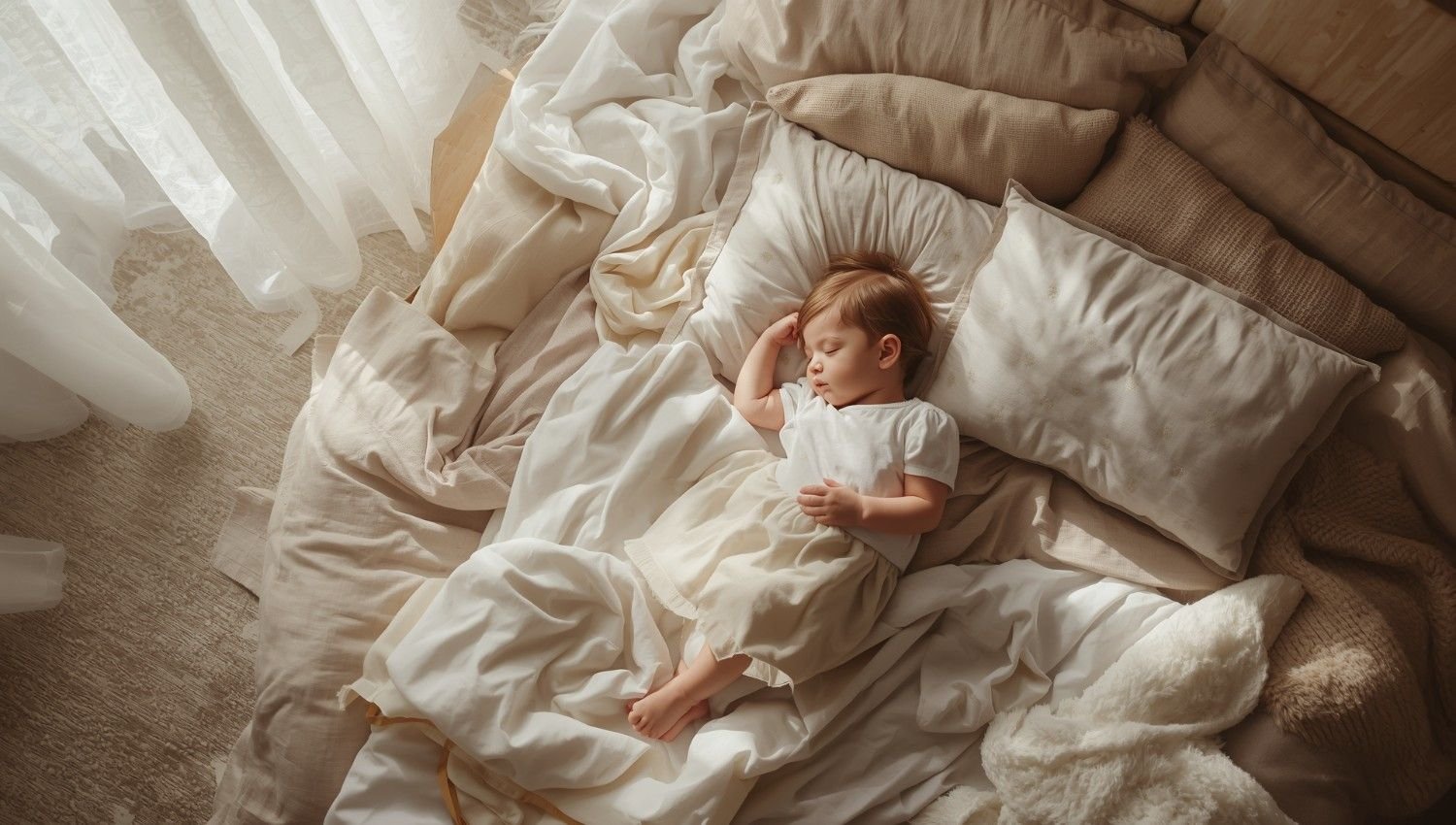Finding the right baby sleepwear often feels like solving a puzzle, where every piece of comfort, safety, and the right outfits needs the right balance. As a parent, I remember the challenge of keeping my newborn snug yet not overheating. Babies can’t tell you if they are too hot or too cold, so creating a safe sleep environment that brings both cozy warmth and proper breathability is the key to a peaceful night’s sleep. With so much variety in baby clothing, it’s about finding that perfect middle ground where baby comfort and safe sleep meet.
In my early weeks as a parent, I learned that the right dress or layering tips directly affect the quality of sleep, sleep duration, and even long-term healthy sleep habits. Choosing comfortable and essential pieces, whether for night’s sleep or daytime naps, ensures your little one enjoys peaceful sleep for many hours. The secret lies in thoughtful baby dressing: knowing when to add warm layers, when to keep it light, and how to adapt the sleep environment in both warm and cold weather. With the right approach, you’ll see a clear difference in your baby’s quality of sleep and overall healthy sleep routine.
Baby Sleepwear Guide!
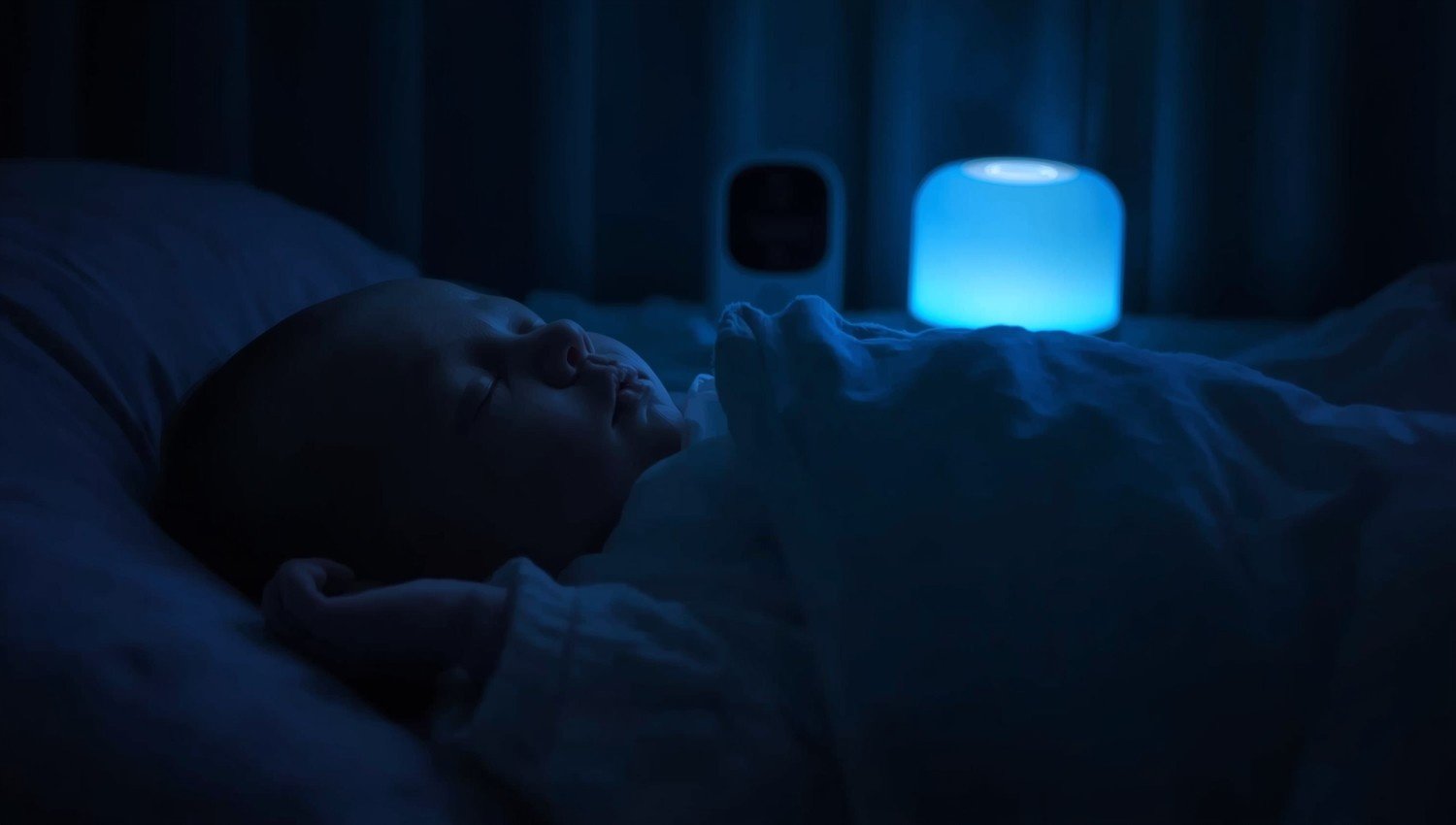
Summer
During summer, keeping a newborn safe from direct sunlight while outdoors is very important, since their melanin levels are still low and they need extra protection. I often used a clip-on parasol on the pram and sometimes a light sunshade with a soft muslin blanket to stop overheating. A single layer of lightweight cotton kept my baby comfortable, while hats added extra cover when it was too hot or even slightly warm. Whether traveling by car, bus, or train, avoiding long exposure to heat made a big difference. Choosing the right dress or outfit gave my baby the ease to rest well and stay cool.
Day Time
- Babies may face sudden changes in temperature, from direct sunlight outdoors to a chilly indoor room.
- Switch between a t-shirt, vest, or jumper with a light cardigan, depending on how warm or hot it feels.
- A sleep suit or light layers of lightweight cotton work best as they are breathable and help prevent overheating.
- When out with the pram, always carry a muslin blanket, a clip-on parasol, and a sunshade for constant protection.
- On trips in a car, bus, or train, using simple layers and hats keeps the baby safe and comfortable all day.
Night Time
- Choose simple nightwear for a safe night.
- A soft vest under the nappy, with light bedclothes, is enough if the baby tends to kick off the sheet.
- To keep the face clear and avoid being entangled, use a sleeping bag that follows the manufacturer’s recommendation for winter tog thickness.
- A sleeping bag reduces risks like SIDS or cot death compared to loose blankets.
- Rotate between lightweight, cellular, fleecy, or padded bags depending on the weather.
- This keeps the baby secure, cozy, and safe through the night.
Winter
When winter arrives, a newborn needs the right clothing to stay cozy in the chilly air. I often used a soft vest with a t-shirt, then added an extra layer like a sleep suit, jumper, or cardigan. A snug pair of hats kept my baby warm when we were out in the car, bus, or train. Layering was my go-to because it was easy to adjust depending on how cold it felt, making sure my baby stayed safe and comfortable at all times.
Day Time
- Temperatures can shift quickly, making the right mix of clothing for a newborn essential.
- Start with a vest or t-shirt, then add a jumper or cardigan when the weather turns chilly.
- A sleep suit is ideal for longer outings.
- Hats keep the baby’s head warm against the winter breeze.
- On walks with the pram or while traveling in a car, bus, or train, having an extra layer ready keeps the baby snug without risking overheating.
Night Time
- Avoid loose blankets that might cover the baby’s face.
- Use a sleeping bag designed for infants, following the manufacturer’s recommendation for winter tog thickness.
- Rotate between lightweight, cellular, fleecy, or padded options depending on how cool the room feels.
- This approach lowers the risks of SIDS or cot death.
- Ensures the baby stays safe, cozy, secure, and enjoys a peaceful winter night’s rest.
Baby Sleepwear Guide! Signs Your Baby May Be Too Hot
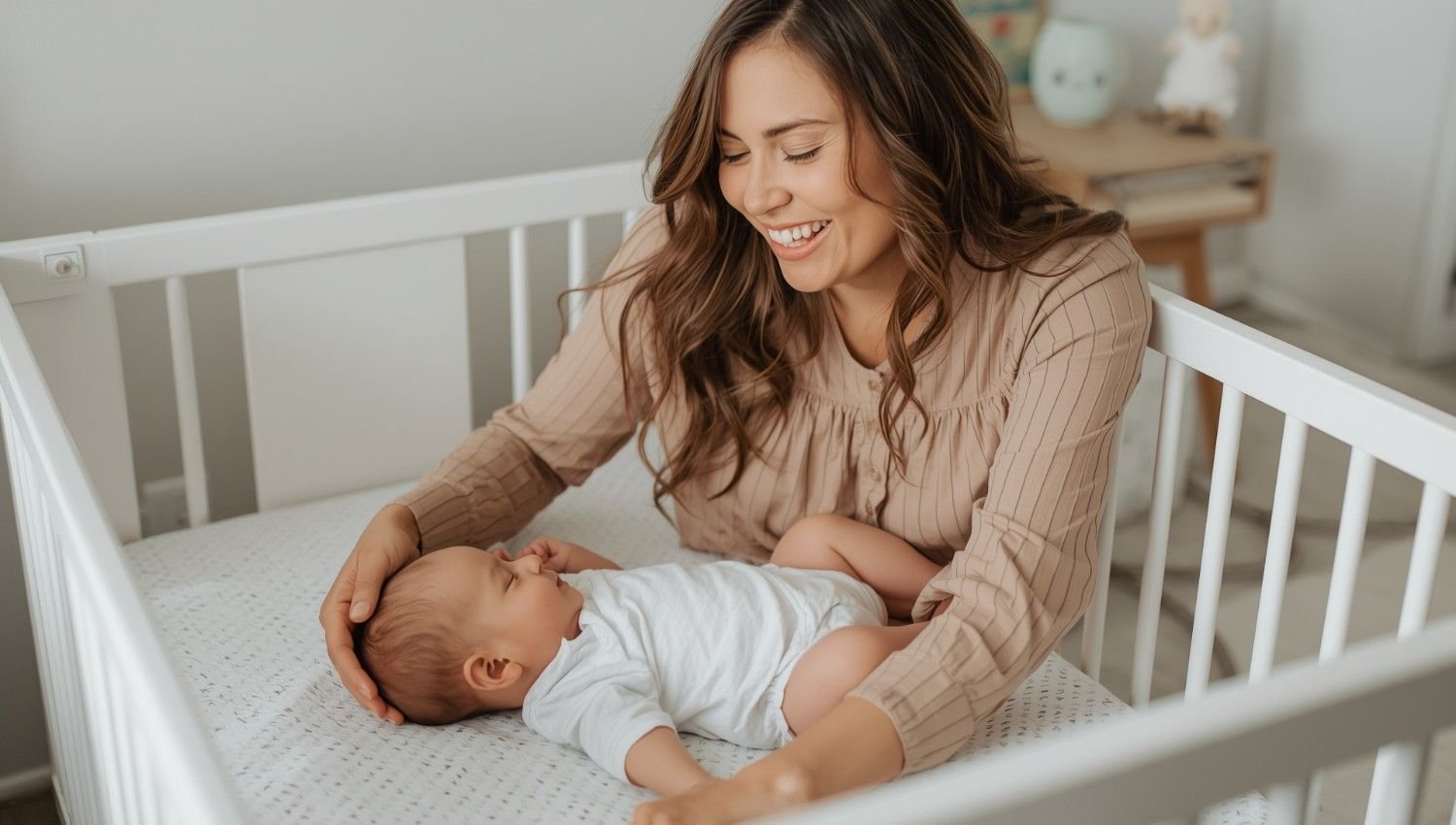
When a baby feels too warm, you may notice sweating or that their tummy is hot to the touch. I often checked my child’s cool hands and cool feet, which can still be normal even if the body is warm. The type of clothing or bedding matters too; using lightweight blankets or even a folded blanket instead of piling on 2 blankets helped avoid overheating. Over time, I learned small temperature adjustment tricks, and that kept my little one comfortable without worry.
Keeping Your Baby’s Temperature Balanced
Babies are still learning to regulate temperature, so watching for overheating is very important. A hot room, thick clothing, or heavy bedding can cause your baby to sweat, and the tummy may feel hot to the touch. I found that simple clothing removal or bedding removal worked wonders, along with sticking to lightweight blankets or a single folded blanket. Checking for cool hands and cool feet often reassured me that everything was normal, while mindful temperature regulation made sure my baby always slept safely and comfortably.
Ideal Room Temperature for Babies
Keeping the room temperature between 16-20 is often the most comfortable and safe range for sleeping babies. From my own experience, using light bedding, a lightweight sheet, or a well-fitting baby sleep bag works best to avoid risks. In winter, I sometimes worried and added too many layers, but I soon learned that piling on bedclothes or extra clothes was not always needed unless my baby was unwell or feverish.
It’s also important to avoid heat sources like a hot water bottle, electric blanket, radiator, heater, or even direct sunshine shining on the crib. These can make a baby overheat quickly and disturb their rest. Instead, I kept the room steady and simple, with breathable layers that made the safe sleep space calm and reliable every night.
“Are You Dressing Your Baby for Sleep Across Seasons the Right Way? Here’s What You Need to Know!”
Summer: Safe and Comfy Choices for Babies
During summer, I found that warm nights called for a much lighter approach to dressing my baby for sleep. When temperatures reached around 24°C, the focus was on avoiding overheating by keeping clothing minimal. A breathable short-sleeve bodysuit with just a nappy kept my little one comfy without extra layers that could cause discomfort. Using a 0.5 TOG Clever Sleeping Bag gave just the right amount of light warmth without trapping heat, keeping the baby safe yet still cozy even on warmer nights.
Spring & Autumn: Flexible Sleepwear Choices
In spring and autumn, the weather felt more unpredictable, so I relied on the layer system for baby sleepwear. With night temperatures often between 15°C and 21°C, a base layer like a long-sleeve bodysuit worked well. I preferred soft, breathable materials such as bamboo fabric, gentle on the skin and good for maintaining warmth without overheating. On cooler evenings, I added a 1.5 TOG Clever Sleeping Bag for extra comfort and flexibility, which helped maintain a lightweight, cozy, and consistent temperature all night long.
Winter: Baby Sleepwear Guide for Cold Nights
On colder nights, I found it helpful to layer my baby’s clothes to keep them warm yet still comfortable. Keeping the room temperature close to 20°C made a big difference, and starting with a base layer like a MORI Long Sleeve Bodysuit under a footed sleep suit gave the right level of coziness. Choosing warm, breathable fabrics allowed the right balance of warmth and airflow, so my little one stayed snug without the risk of overheating. For extra comfort, a 2.5 TOG Clever Sleeping Bag or even a soft sleep shirt added that gentle coziness. Adding an extra layer when it felt too cold helped my baby stay toasty throughout the night.
Adjusting Sleepwear During Seasonal Transitions
During in-between seasons like late spring, early summer, late autumn, or early winter, temperatures were often unpredictable, so I relied on flexible layers. With room temperatures shifting anywhere from 15-24°C, I learned that babies could easily become overheated or even underdressed. A long-sleeve bodysuit paired with a 1.5 TOG Clever Sleeping Bag worked as a versatile layer, keeping my baby snug yet comfortable. On nights with fluctuating temperatures, I sometimes added a lightweight blanket or removed an extra layer as needed. Being ready to redress quickly meant my baby could enjoy safe and steady rest all night long.
Dressing Babies for Sleep: From Newborn to Toddler
Every baby has different sleep needs depending on their age, and choosing the right dressing makes a big difference. As they go through growth, you want to allow movement and freedom while still keeping them snug. I noticed my little one slept better when the clothes supported natural movements, letting them rest without feeling restricted.
Keeping Newborns Snug and Safe at Night
In the early days, a Newborn Swaddle Bag or a Long, long-sleeve bodysuit under a soft sleep suit kept my baby snug and secure. Switching to a sleeping bag like the Clever Sleeping Bag offered freedom to move while still staying comfortable, warm, and snug. The design supported natural movements, which reassured me that my baby could sleep safely and soundly.
Safe and Comfy Sleepwear for Older Babies
As older babies become more mobile, I found they needed fewer layers to stay comfy. A long-sleeve onesie or footed sleep suit with a sleeping bag worked well, while a bamboo zip-up sleep suit or MORI 1.5 TOG Clever Sleeping Bag provided steady warmth. With their constant wriggling and attempts to kick off covers, the secure design ensured proper freedom of movement in different temperatures. Small adjustments helped me keep them safe, cozy, and well-rested all night long.
Safety Tips for Dressing Your Baby for Sleep
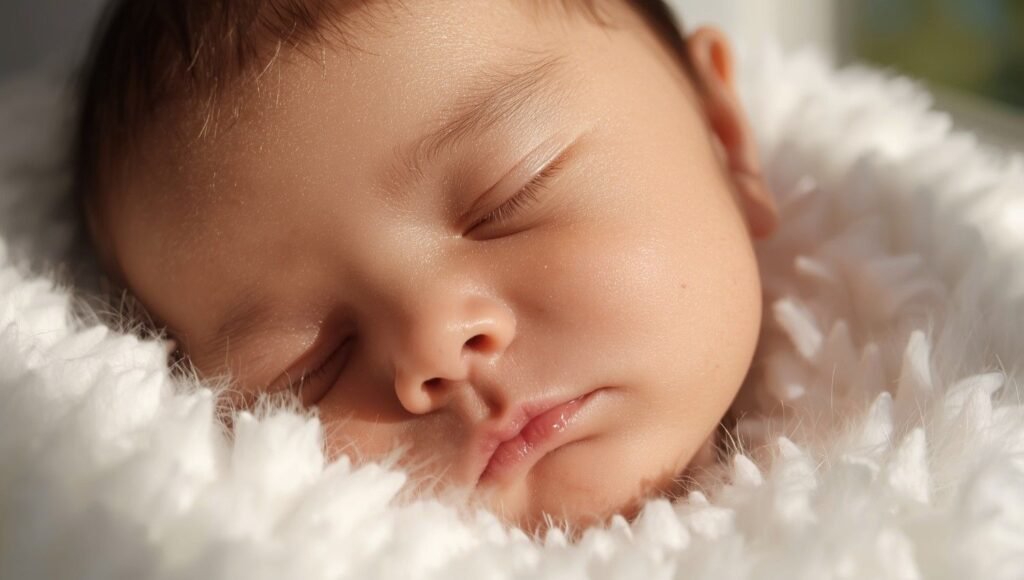
Making sure your baby is both comfortable and safe during sleep is so important. I quickly learned that preventing overheating and following simple safety routines can lower the risk of Sudden Infant Death Syndrome (SIDS). The best tips are to dress your little one appropriately, watch the room temperature, and always keep their sleep space simple and secure.
1. Check the Room Temperature First
Keep the room temperature between 16-20°C, which most experts say is the safest range for babies.
2. Dress Your Baby in Light Layers
Choose light layers made from breathable, natural fabrics like cotton or bamboo, and avoid heavy layers that trap heat.
3. Choose a Sleeping Bag Over Blankets
A sleeping bag is safer than blankets, as loose blankets can cover the face while sleeping. It keeps them cozy and warm without risk.
4. Check Warmth by Feeling the Neck
Check your baby’s neck to see if they are too warm; hands and feet can often feel cool, but the neck is one of the best indicators.
5. Skip Hats When Indoors
6. Keep the Cot Free of Extra Items
A safe cot should have no pillows, soft toys, or loose items, only a fitted sheet and, if needed, a sleeping bag.
7. Always Place Baby on Their Back to Sleep
Always put your baby back to sleep, as this sleeping position is the safest position recommended by the NHS and other health experts.
Dressing Your Baby for Sleep: 5 Additional Key Tips Every Parent Should Know
- Keep the room temperature around 68-72°F to avoid your baby getting too cold (causing wakeups) or too warm, which may lead to overheating and higher SIDS risk.
- Dress in light layers, start with a onesie as a base layer, then add long sleeves or footie if needed. Use a Sleep Sack, swaddle, or wearable blanket, but avoid loose blankets for babies under a year.
- Swaddling can help reduce the startle reflex and limit wakeups in the early months, but once rolling starts, switch to a HALO Sleep Sack for safety.
- Use tools like the Sleep Sure smart monitor to track rollover and Ideal Temp, and always check fabric type, choose cotton or all-season Sleep Sacks for breathable comfort, and micro-fleece for extra warmth and snuggles in winter.
- Pay attention to temperature-regulating fabric and the TOG rating (thermal overall grade measurement) to pick the right warmth. Whether cotton for light comfort or micro-fleece for cozy nights, knowing the TOG gives confidence that your baby is dressed safely.
Ensuring Safe and Comfortable Sleep for All Ages
Dressing Your Baby for Sleep Across Various Scenarios
Every baby faces different sleep needs in specific scenarios, and environmental factors can bring unique challenges. On travel or vacation, I stuck to the same guidelines, using layers, a sleep sack, or a wearable blanket to adjust for climate and temperature. Adding a familiar scent, a steady routine, or even a small lovey as a security object made sleepovers, daycare, or being with another caregiver smoother. During illness or sudden fluctuations in body temperature, I relied on breathable fabrics to avoid overheating when there was a fever, or extra layers for chills. As seasons shifted, I learned to adjust for temperature fluctuations with versatile sleepwear, like detachable sleeves. And when moving from swaddling to free movement, I followed safe methods to support hip development and watched for rolling over signs to know it was time for transition.
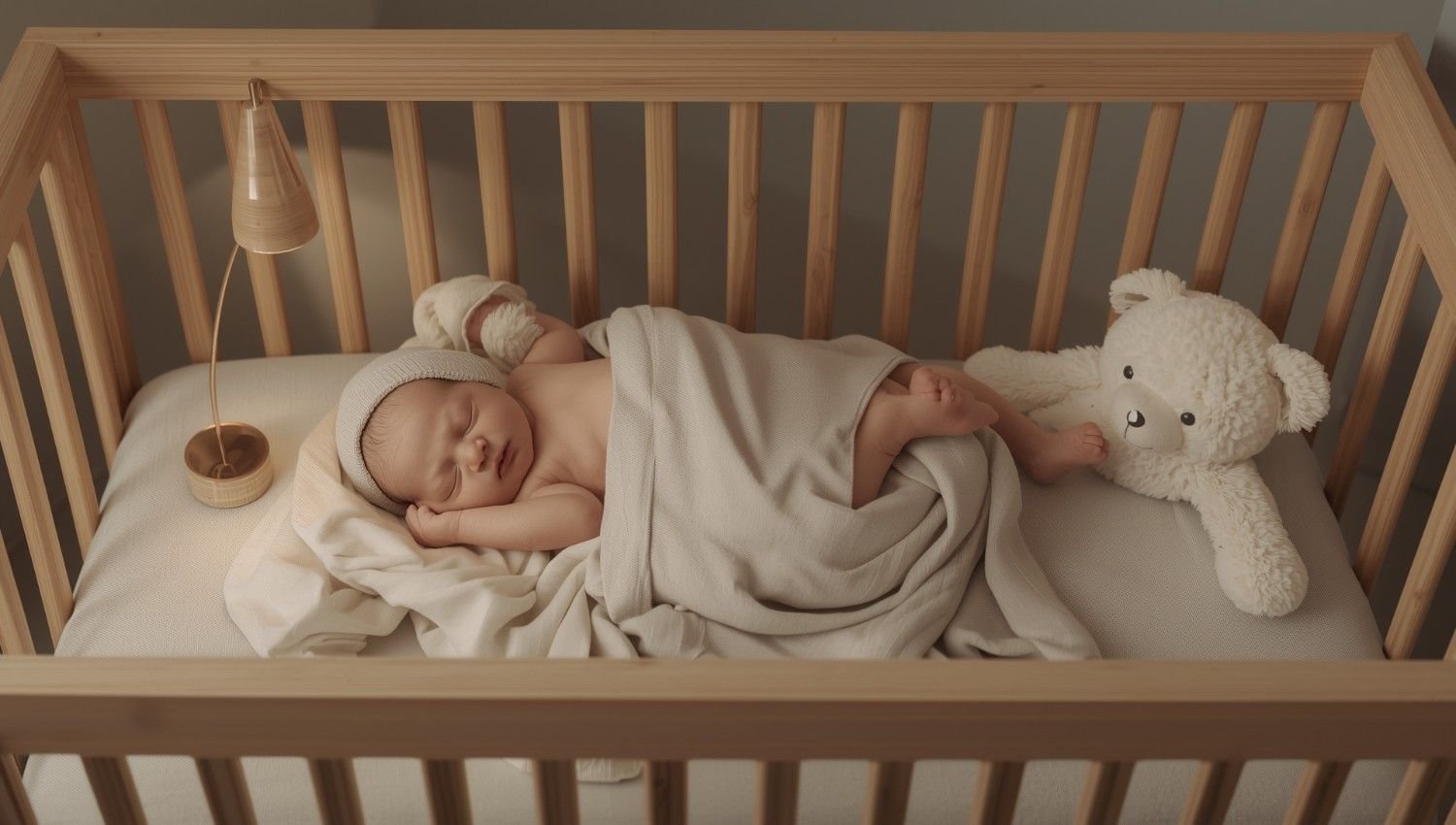
FAQ’s
- What’s the right number of layers for a newborn?
In the first days and weeks of life, newborns may need extra layers to help them regulate their temperature. You can start by dressing your baby similarly to how you are dressed. The American Academy of Pediatrics recommends that a newborn be dressed in no more than one additional layer compared to what adults are wearing in the same environment. If you have any concerns, it’s always a good idea to consult a pediatrician to make sure your baby is dressed appropriately and comfortably.
- What should you look for if your baby feels too warm at night?
It’s important to check if your baby is too hot while they’re sleeping. If your baby’s neck or hair is sweaty, or if their cheeks are flushed, they might be getting too warm. Another sign is if your baby’s core, their chest, back, or tummy feels clammy or hot to the touch. In this case, it’s a good idea to reduce layers or switch to a sleep sack or swaddle with a lower TOG rating. If your newborn is wearing a diaper and a b.e.s.t. swaddle, make sure the air flow is good to ensure they are safely swaddled and comfortable, not too warmly dressed.
- How do you know if your baby is chilly at night?
If your baby feels cold at night, you can check their core, especially the chest, neck, back, and tummy. If these areas feel cool to the touch, it means your baby is not warm enough. Keep in mind that fingers and toes may feel cool even if your baby is dressed perfectly, so always check the core. In this case, you might want to add thicker jammies, a onesie, or a sleep sack with a higher TOG rating to keep your baby warm. It’s important to adjust their blanket or pajamas based on the temperature of the room to ensure they are comfortable.
- Do newborns need to wear hats while sleeping?
According to the American Academy of Pediatrics, newborns should not wear hats to sleep after the first few hours of life, even if they were used in the NICU or hospital. While hats help regulate a newborn’s temperature during the first few hours, they are not needed once your baby is indoors. This helps prevent overheating and ensures that your baby remains comfortable while they sleep.

